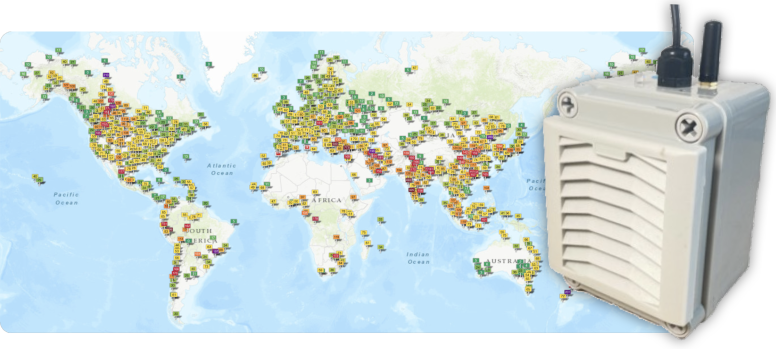
Publishing data on the World Air Quality Index project is free for every one. But it is also simple and straightforward: All you need to add data on the World Air Quality Index map is to provide a feed URL with the real-time information about the monitoring stations (name and location), the pollutants being measured and the real-time readings (together with the units, for instance milligrams or ppb).
Qualification Criteria
Note that, historically, the data published on the World Air Quality Index maps (aqicn.org and waqi.info) was only the official data provided by each country respective Environmental Protection Agency (see the full EPA list).
The official data refers to data monitored using professional BAM, TEOM and similar high-cost air quality monitoring stations. Those stations are not trivial to use, and do require constant maintenance and calibration by the EPA professional field-engineering teams.
However, nowadays, more affordable laser-scattering-based air quality monitoring stations are widely use as companion to the official air quality monitoring stations. Those more affordable station can cost 1000 times less than the BAM and TOEM station.
We do recommend to use the semi-professional GAIA air quality monitoring stations for this purpose. But we also accept data from other stations. Nevertheless, such particle counter-based stations need to report enhanced data feed with additional quality controls (see quality control section).
Feed format
Since almost every country has its own reporting format, the World Air Quality Index project can accept any kinds of formats for the feeds: They can be in CSV, JSON or just plain text or HTML format. You can find at the bottom of this page 3 example for CSV, HTML and JSON.
For reference, check the official feeds for Singapore or Netherlands and notice that despite they are all different, they can be ingested by our system.
For the instant air particle counters, you can either report the data via our own web server, or via the thingspeak.
Data ingestion
The World Air Quality Index system will take care of regularly checking the data from the feed, and each time an update is available, it will be processed, converted to the US EPA scale AQI values, and publish on the World Air Quality Index website within minutes.
Also, although only PM2.5, PM10, Ozone, NO2, SO2 and CO Air Quality data is published, the system does collect more pollutants for forecasting purpose: Benzen, Toluene, Ethylbenzene, NOx, THC, NMHC, PM1, Formaldehyde, Mercury, Ammonia, Methane, Hydrogen sulfide, Nitrous acid, Phenol, Naphthalene, paraxylene (p-Xylen), metaxylene (m-Xylen), etc..
It is also possible to publish meteorological data: Temperature, Atmospheric Pressure, Humidity, Precipitation, Wind Speed, Wind Direction, Solar Radiation and UVI. If not provided, we will use other relevant meteorologic information sources.

